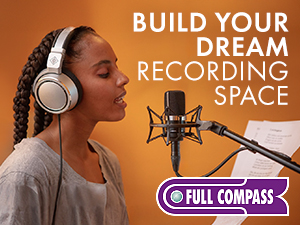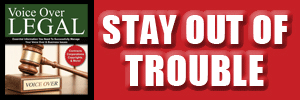|
AUDIOBOOK DEMOS - PART 1 How To Pick Your Audiobook Demo Materials ... And Some Other Good Demo Stuff, Too  By Dawn Harvey By Dawn HarveyVoice Actor / Audiobook Narrator & Coach Since I began working in the
voice-over industry a couple or ten thousand technological advancements
ago, the
industry standard for the production and distribution of demos has
changed dramatically. Back then, we physically handed over or mailed out our demos. And the
content of
what we handed out was different from what it is today, as well. So it's
pretty
likely that the information that I am about to share with you also has a
shelf
life. I can't imagine how it will change, but I've no doubt that it will. For
today then, here's what I have gleaned from coaches, classes, producers,
webinars
and casting people along the way about the audiobook demo. THE DEMO SPECS ... Of course, different
publishers and casting people have different preferences regarding what
they
want to have delivered where and how often, but a beginning narrator
should
start with three demo pieces. Unlike other voice-over genres, an
audiobook
compilation demo generally runs about five minutes, contains three pieces,
and is
devoid of any music or sound effects. And the demo should contain:
To refresh your memory:
FOR FICTION ...
Ensure
that one of the fiction pieces you choose contains some male/female
dialogue, as
most publishers want to know how you handle men's voices if you're a
woman and
vice versa.
FOR NON-FICTION ...
SELECTING YOUR BOOKS Look for selections from contemporary
books (written over the past 50 or so years) in genres
that you love, that you want to pursue and that you could conceivably be
cast to record. So, if you're a 25-year-old male, don't choose
something from
The Life and Times of Imelda Marcos. You
may love reading business books, but if your natural speaking voice
sounds more
like a munchkin than a manager, it might be better to leave those books
to
others while you focus on children's books and sci-fi/fantasy, for
example. The
Audie Award categories are a good place to start for a quick list of genres. Then it's a matter of finding a selection that is
between 1.5 and 2 minutes in length. You have complete liberty to edit
the
piece as you desire, cutting out and adding bits to suit your
needs. There's
no need to worry about copyright infringement for "demo only" use of
materials.
Also, choose books that are well written, but it's best not
to select recent or well-recognized best-sellers narrated by top ranking
audiobook
narrators so as to avoid direct comparison. For example, I wouldn't
advise selecting
a piece from Harry Potter.
START WITH A BANG!
I try to find pieces that are interesting and that tell
a story in the time allotted ,with an eye to keeping people listening for
as
long as possible. But it must start off with a bang! If you don't
capture
them within the first 10 seconds, your listener will likely move on.
As far as accents go, it's great to have those on a
demo if you do them well, but it is more important that your first demos
showcase
your natural voice. If some of the characters in your fiction pieces
have
accents but the narrator is you, that could be a good choice. Certainly,
you
should have demos showing off your proficiency with accents, characters,
genre
specializations and technical expertise (from other lives you've lived
in
medicine, the military, engineering, or whatever – in my case, the oil
industry, management and law). But those should generally come later.
You've
got the whole rest of your life to keep creating new demos as your
skills grow
and you explore new genres.
DEALING WITH DIALOGUE For the male/female dialogue piece, I find using paper
books, rather than eBooks, as an easier way to locate potential selections. Since
dialogue is so easy to spot on the printed page, I do a flip through the
book
(like fanning a deck of cards) to locate dialogue-heavy pages, and then
determine whether the selection showcases both male and female voices. If it
does, I read the selection and if it has potential, I flag it with a
post-it
and repeat the process until I have a dozen or so potential pieces that
I will then go over (ad nauseam) to find the "perfect" piece. As usual,
I spend way more time at this than most people,
but that's just me. I'd hate to think that I might have missed the pièce
de résistance of all pieces. I follow the same flagging and narrowing down process with the other
pieces as
well, but that generally involves more "reading" and less "flipping
through"
than when looking for dialogue pieces.
USE A PREVIOUS NARRATION? It's not necessary that your demo material be from a
title that you've recorded. In fact, if the writing is not stellar, it's
better
that you don't use it. Most demos are
made from materials the narrator was not personally hired to record. Even if
the
material you were hired to narrate meets all of the other demo selection
criteria,
you should still re-record the selection rather than using what
you
recorded for the book. And you'll want to give this selection extra special
attention to ensure that it presents you in the absolutely best way
possible. That's
worth the time it takes to be sure that you have explored every nuance,
fully
understood every word and character, and connected with every bit of
sub-text that
exists in the piece.
See Part 2 - More Tips For Creating Great Audiobook Narration Demos -------------------- ABOUT DAWN Dawn Harvey is an actress, singer and voice over artist who has narrated over 50 audiobooks and is the recipient of an Earphone Award and a SOVAS Award for her audiobook work. She is passionate about sharing her knowledge, developing and teaching land and law courses in her "past life" in the oil and gas industries. She developed and began teaching workshops on the art and business of audiobook narration in 2014, and now teaches several times a year in various Canadian cities, as well as private coaching via Skype. Email: dawnofvoice@me.com Web: http://dawnofvoice.ca |
Tell Us What YOU Think!
Please Note: Since we check for spam, there will be a slight delay in the actual posting of your comment.
Comments (3)
Leah
9/9/2022 at 11:56 PM
This was very helpful. I want to give this a serious go, but not sure the 1st step to take. Thank you ❤️
Joan Laurea
7/6/2021 at 5:07 AM
Very informative!
Greg Lee
8/4/2020 at 3:05 PM
Great tips, nicely written! Thank you!








.png)

click for new article alerts